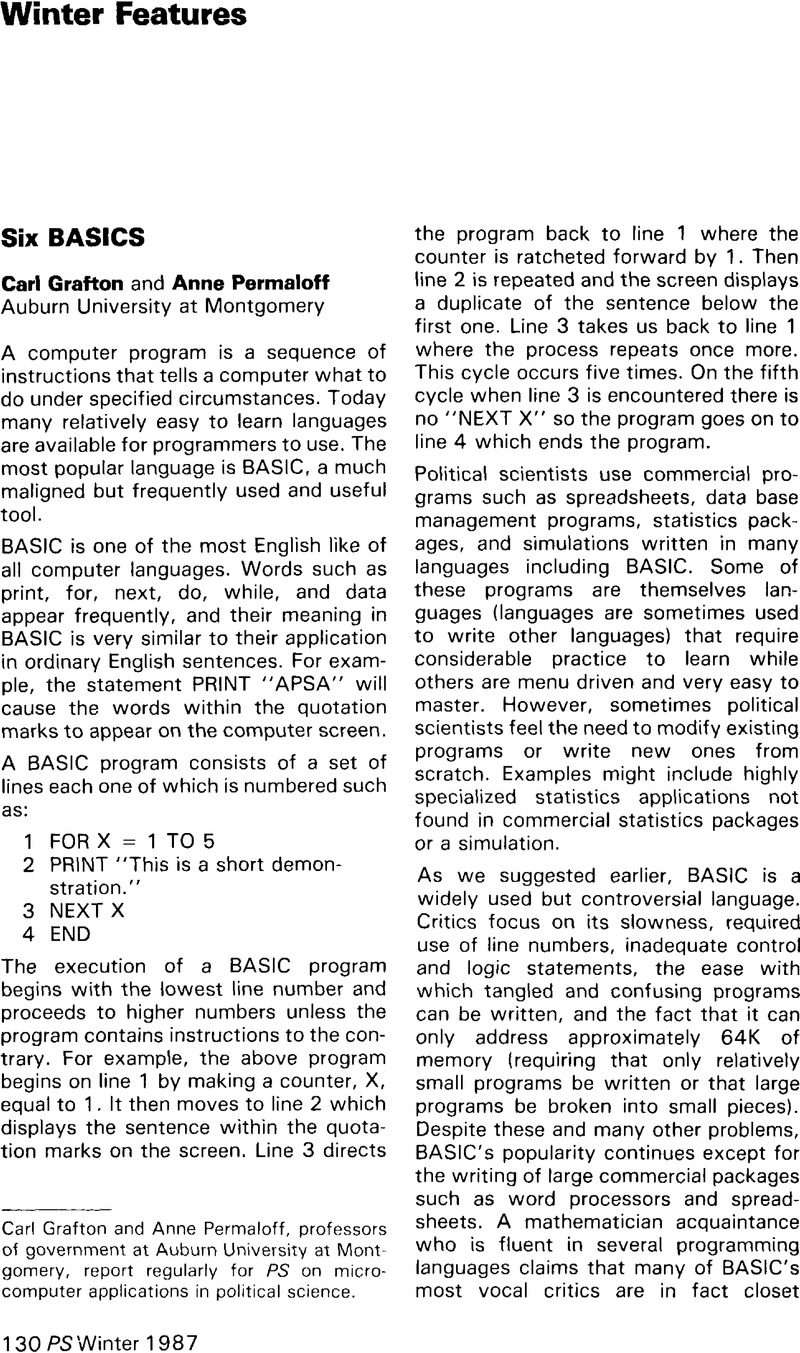Published online by Cambridge University Press: 21 November 2022

1 The linear programming example was taken from Executive Computing by Nevison, John (Reading: Addison-Wesley, 1981), pp. 176–78.Google Scholar It is useful for language testing purposes because it is very slow. The program we wrote runs signed digraphs with which complex systems can be modeled. (See Roberts, Fred S. and Brown, Thomas A., “Signed Digraphs and the Energy Crisis,” American Mathematical Monthly (June-July, 1975), 577–94.CrossRefGoogle Scholar) Data are entered, edited, the resulting digraph is run, and the output can be read from the screen, saved to disk, and represented in graphical form.
2 Roski, Steve, Data Structures on the IBM PC (New York: Brady, 1985).Google Scholar